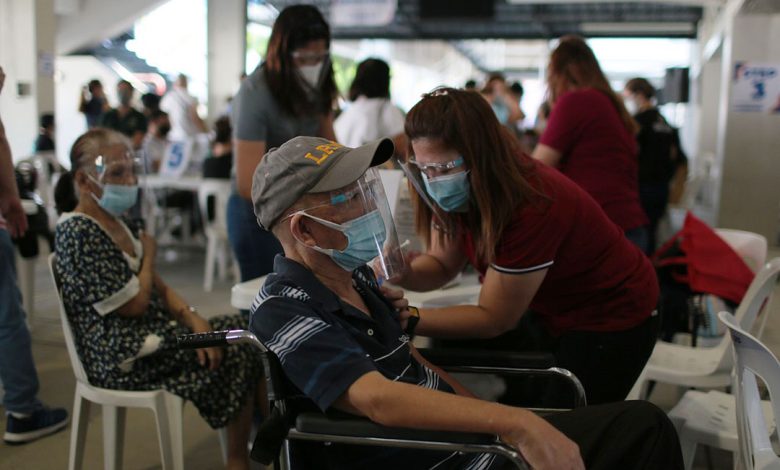PHL starts COVID booster jabs for elderly, seriously ill

SENIOR citizens and those with serious illnesses in the Philippines started getting booster shots against coronavirus disease 2019 (COVID-19) on Monday after the country has fully vaccinated nearly half of its target adult population.
Secretary Carlito G. Galvez, Jr., the country’s vaccine czar, told a ceremonial injection of booster shots that the country’s supply of vaccines is enough to give additional doses to those who are considered at high-risk of coronavirus.
The government has allocated six to eight million doses for the third shot of senior citizens and seriously ill people, he said at the televised event held in a government-owned hospital in Quezon City.
About 1.6 million doses were also allocated for the booster shots of health workers, he added. “We have enough doses of vaccine brands.”
Health workers, who have been prioritized in the government’s coronavirus immunization program, started receiving booster shots last week.
The rollout of additional doses for seniors and people with health complications would be conducted in phases, Health Undersecretary Maria Rosario S. Vergeire told a virtual news briefing. It is not yet available for the general population.
Transplant and dialysis patients, patients under immunosuppressive treatments, and people with immunodeficiency conditions such as those with HIV or active cancer will be prioritized, she said.
Philippine food and drug regulators have already cleared the vaccines made by Sinovac Biotech Ltd., AstraZeneca Plc, Pfizer Inc., and Moderna Inc., as booster and third doses.
Booster shots are given to people whose immunity to the coronavirus wane after several months since receiving a single-dose or two-dose vaccine while additional doses or the third doses are given to individuals who cannot have appropriate immunity against the virus, Ms. Vergeire clarified.
The Philippines has already administered 75.6 million doses of coronavirus vaccines as of Nov. 21. Nearly 33.6 million adult Filipinos have been fully vaccinated.
The country is aiming to vaccinate at least 15 million people across 16 regions outside Metro Manila from Nov. 29 to Dec. 1. The country is struggling to vaccinate at least 50% of its adult population this year, after it contained a spike in coronavirus cases triggered by a highly contagious virus variant.
Health authorities reported 984 coronavirus cases on Monday, bringing the total to 2.83 million.
The death toll rose to 47,288 after 218 more patients died, while recoveries increased by 2,229 to 2,76 million, the Department of Health (DoH) said in a bulletin.
The agency said there were 19,798 active cases, 56.6% of which were mild, 4.6% were asymptomatic, 13.3% were severe, 20.02% were moderate, and 5.6% were critical.
It said 32% of intensive care units in the Philippines were occupied, while the rate for Metro Manila was 31%.
The Health department said 447 duplicates were removed from the tally, 434 of which were tagged as recoveries and four were reclassified as deaths.
The agency said 169 cases “were found to have tested negative and have been removed from the total case count.” Of these, 94 were tagged as recoveries. Two laboratories failed to submit data on Nov. 20.
The high number of coronavirus-related deaths recorded recently is a result of late reporting, Ms. Vergeire said, noting that there are delays in validations at the local levels.
“These deaths did not only happen in November,” she said in Filipino.
The reporting is quite late since it needs to be validated by local governments units, she added. “These are being validated by local governments then submitted to the national government.”
Meanwhile, Ms. Vergeire said the Philippines remains at low-risk from the coronavirus.
The country’s average daily attack rate was moderate at 1.55 cases for every 100,000 people. “The national health systems capacity is at low risk,” she said.
A number of regions in the country were also at low-risk from the coronavirus, the Health official said. “All regions are now at minimal to low risk case classification with negative two-week growth rates and average daily attack rates less than seven per 100,000 population.”
Still, Cagayan Valley in the northern part of mainland Luzon showed a positive two-week growth rate in the recent week, she said. — Kyle Aristophere T. Atienza




